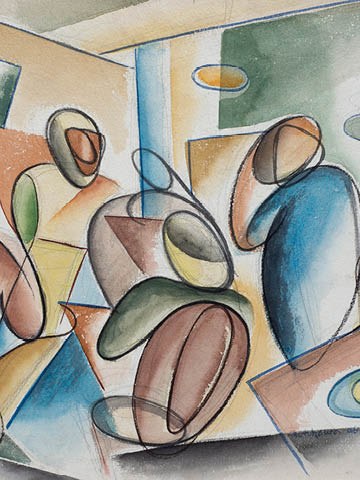Originally published by King 5 Evening on February 6th, 2023, 7:30 p.m. Authored by Kim Holcomb
EDMONDS, Wash. — An exhibition at Cascadia Art Museum in Edmonds shows a never-before-seen side to one of the Northwest’s most famous artists.
George Tsutakawa is one of Seattle’s most storied sculptors.
But “George Tsutakawa: Early Works On Paper” features his watercolors, block prints, and sketches dating back to 1929.
“He was one of the great artists here — in fact I think he’s one of the great American artists, personally,” said curator David Martin. “People think of his fountains number one, his sculpture number two, his paintings number three, and the early works on paper? Probably not at all.”
The pieces were stored in Tsutakawa’s studio. A few years ago, Martin was given permission to look through the collection and was shocked by what he found.
“I saw this beautiful body of work that no one knew about, including the family,” Martin said.
The three-room exhibition at Cascadia showcases Tsutakawa’s evolution as an artist, reflecting his experiences as a human.
Born in Seattle, he was sent to live in Japan with his grandparents following the death of his mother. When he returned as a teenager, he enrolled in high school and had to learn English all over again. Martin said he was encouraged to pursue art by two teachers at Broadway High School.
Tsutakawa later attended the University of Washington, where he both earned his MFA and began teaching.
“These (pieces) are things you would really never see hanging in an exhibition… they are things he did in college at the UW, and these are really more exercises,” Martin said.
In World War Two, Tsutakawa was drafted, while family members and friends were forced into internment camps.
“When he’s in the military, he starts doing works based on surrealism,” Martin said. “I don’t know if that’s any kind of psychological clue to being in the military and fighting against Japan, which is where his family came from.”
Other pieces showcase Tsutakawa’s beloved city, and leave breadcrumbs to who he would become.
“Some of the real early work dating back to the 30s, I could see elements that would resurface again in his later work, especially the 2-dimensional work,” Martin said. “I would love to see people who know his work and think they know something about George Tsutakawa to come in and be completely surprised, as I was when I saw a lot of this work.”
“George Tsutakawa: Early Works On Paper” runs through March 26.


